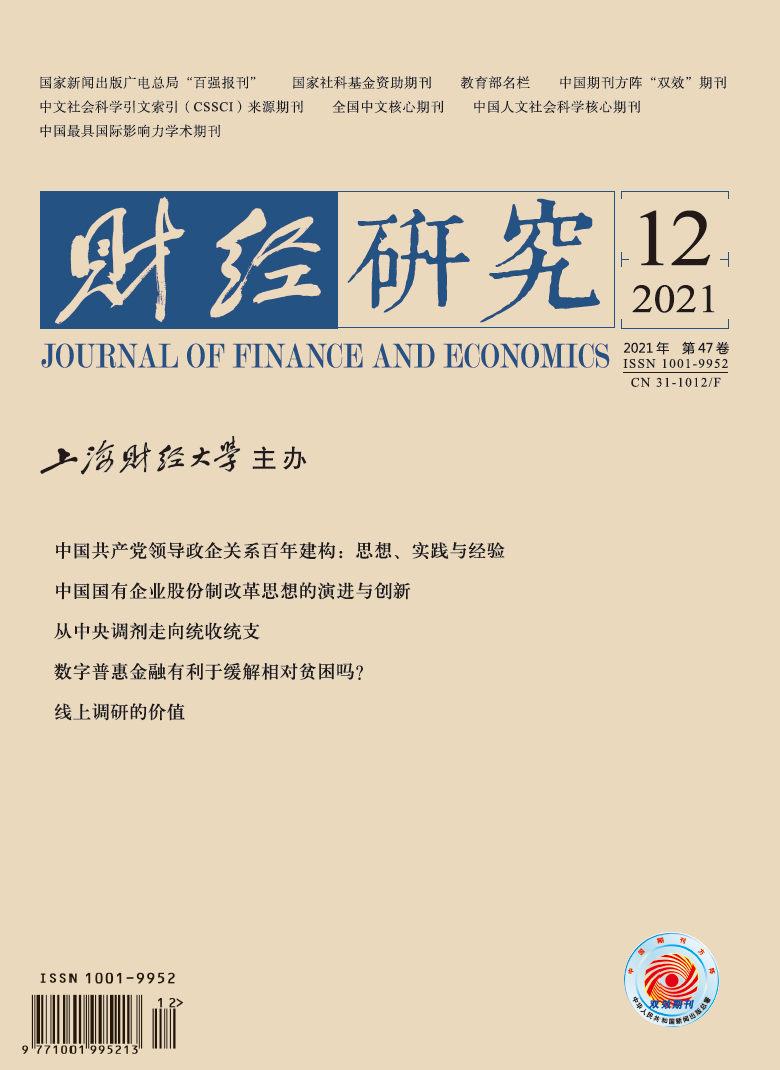经过多年的经济体制改革,中国逐步形成了一种上游国有企业占主导,下游民营企业为主的“垂直结构”。文章借鉴Melitz(2003),将异质性企业模型引入下游民营企业,建立了一个上游国有企业垄断、下游异质性民营企业垄断竞争的理论模型,并将上游“竞争自由化”和“上游征税、下游补贴”政策分别嵌入模型,利用中国数据进行参数校准,定量研究了不同产业政策的影响。结果发现,上游“竞争自由化”政策能使下游民营企业数量和社会福利分别增加188.70%和120.71%,而少量征税率和补贴率组合下的“上游征税、下游补贴”政策不仅能使下游民营企业数量和社会福利分别增加4.93%—332.90%和3.43%—162.28%,而且上游国企的利润也会因为下游企业数量和中间品需求的增加而提高,实现了上下游企业的“双赢”。因此,两种产业政策都具备有效性,但“上游征税、下游补贴”政策更具有现实可行性,政府应当优先考虑采用“上游征税、下游补贴”的产业政策,同时逐渐放开非战略性上游产业的市场准入,以促进合理生产结构的形成,提升总体社会福利。
垂直结构、产业政策与社会福利
摘要
参考文献
10 邵敏,包群. 地方政府补贴企业行为分析:扶持强者还是保护弱者?[J]. 世界经济文汇,2011,(1):56−72. DOI:10.3969/j.issn.0488-6364.2011.01.004
16 Bergoeing R, Kehoe P J, Kehoe T J, et al. Policy-driven productivity in Chile and Mexico in the 1980s and 1990s[R]. Working Paper 8892, 2002.
17 Bernard A B, Redding S J, Schott P K. Comparative advantage and heterogeneous firms[J]. The Review of Economic Studies,2007,74(1): 31−66. DOI:10.1111/j.1467-937X.2007.00413.x
18 Brandt L, Zhu X D. Accounting for China’s growth[R]. IZA Discussion Paper No.4764, 2010.
19 Defever F, Riaño A. China’s pure exporter subsidies[R]. FIW Working Paper, 2012.
20 Hsieh C T, Klenow P J. Misallocation and manufacturing TFP in China and India[J]. The Quarterly Journal of Economics,2009,124(4): 1403−1448. DOI:10.1162/qjec.2009.124.4.1403
21 Krugman P R. Targeted industrial policies: Theory and evidence[J]. Industrial Change and Public Policy,1983: 123−155.
22 Li X, Liu X W, Wang Y. A model of China’s state capitalism[R]. HKSTU Working Paper Series 2015-12, 2015.
23 Melitz M J. The impact of trade on intra-industry reallocations and aggregate industry productivity[J]. Econometrica,2003,71(6): 1695−1725. DOI:10.1111/1468-0262.00467
24 Romalis J. Factor proportions and the structure of commodity trade[J]. The American Economic Review,2004,94(1): 67−97. DOI:10.1257/000282804322970715
引用本文
潘珊, 黄莉. 垂直结构、产业政策与社会福利[J]. 财经研究, 2021, 47(12): 122-135.
导出参考文献,格式为:





 5478
5478  5605
5605

